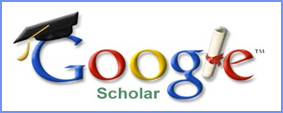Students Expectations of Higher Education at Indonesian Public and Private Universities
DOI:
https://doi.org/10.37985/jer.v4i4.662Keywords:
For-Profit College, Higher Education, Private Universities, Public UniversitiesAbstract
Understanding student expectations about offering the best educational experience is crucial in the education business. As a result, customer-oriented methods to management are widely used at higher education institutions (HEI). The customer-oriented approach to students as customers has been examined from several perspectives in academic literature. However, it has rarely been addressed in terms of comparing public and private universities. The current study attempted to evaluate disparities in student expectations of their educational experience at public and private colleges using a student-customer orientation questionnaire (SCOQ). The sample comprised of 238 undergraduate students from Indonesian universities. The study discovered intriguing distinctions between university kinds in terms of graduation, curriculum design, communication with service staff, classroom studies, individual studies, and course design.
Downloads
References
Amiri, E., Ranjbar, M., & Zamani, H. (2015). New management approaches in higher education. The Online Journal of Quality in Higher Education, 2(3), 92–97.
Argenti, P. (2000). Branding B-schools: Reputation management for MBA programs. Corporate Reputation Review, 3(2), 171–178. https://doi.org/10.1057/palgrave.crr.1540111
Brown, T. O. M. J., Mowen, J. C., Donavan, D. T., & Licata, J. W. (2002). The customer orientation of service workers: Personality trait effects on self- and supervisor performance ratings. Research Notes and Communications, 39, 110–119. https://doi.org/10.1509/jmkr.39.1.110.18928
Churchill, N. (2020). Mobile technologies and teacher readiness. Educational Media International, 57(3), 183–186. https://doi.org/10.1080/09523987.2020.1833679
Cohen, J. (1998). Statistical power analysis for the behavioural sciences. Lawrence Erlbaum Associates.
Darlaston-jones, D., Pike, L., Cohen, L., & Young, A. (2003). Are they being served?: Student expectations of higher education. Issues in Educational Research, 13(1), 31–52.
Eagle, L., & Brennan, R. (2007). Are students customers? TQM and marketing perspectives. Quality Assurance in Education, 15(1), 44–60. https://doi.org/10.1108/09684880710723025
Gorgodze, S., Macharashvili, L., & Kamladze, A. (2020). Learning for earning: Student expectations and perceptions of university. International Education Studies, 13(1), 42–53. https://doi.org/10.5539/ies.v13n1p42
Gorsuch, R. (1983). Factor analysis (2nd ed.). Hillsdale.
Guilbault, M. (2017). Students as customers in higher education: The (controversial) debate needs to end. Journal of Retailing and Consumer Services, July 2016, 0–1. https://doi.org/10.1016/j.jretconser.2017.03.006
Hussey, T., & Smith, P. (2010). Transitions in higher education. Innovations in Education and Teaching International, 47(2), 155–164. https://doi.org/10.1080/14703291003718893
Judson, K. M., & Taylor, S. A. (2016). Moving from marketization to marketing of higher education: The co-creation of value in higher education. Higher Education Studies, 4(1), 51–67. https://doi.org/10.5539/hes.v4n1p51
Koris, R. (2014). Customer orientation at a higher educational institution: The perspective of undergraduate business students in Estonia. Tallinn University of Technology.
Koris, R., & Nokelainen, P. (2015). The student-customer orientation questionnaire (SCOQ): Application of customer metaphor to higher education. International Journal of Educational Management, 29(1), 115–138. https://doi.org/10.1108/IJEM-10-2013-0152
Malhotra. (2010). Marketing research: An applied orientation (6th ed.). Pearson Education.
Muncy, J. A. (2008). The orientation evaluation matrix (OEM): Are students customers or products? Marketing Education Review, 18(3), 15–23. https://doi.org/10.1080/10528008.2008.11489044
Narver, J. C., & Slater, S. F. (1990). The effect of a market orientation on business. Journal of Marketing, 54(4), 20–35. https://doi.org/10.1177/002224299005400403
Nunnally, J. C. (1978). Psychometric theory (2nd ed.). McGraw-Hill.
Pesch, M., Calhoun, R., Schneider, K., & Bristow, D. (2008). The student orientation of a college of business: An empirical look from the students’ perspective. The Marketing Management Journal, 18(1), 100–108.
Sawilowsky, S. S. (2009). New effect size rules of thumb. Journal of Modern Applied Statistical Methods, 8(2), 597–599. https://doi.org/10.22237/jmasm/1257035100
Sekaran, U. (2010). Research methods for business: A skill-building approach (4th ed.). Wiley.
Singh, A., & Singla, L. (2018). students expectation and perception regarding service quality in higher management education in public and private Universities of Punjab. Journal of Management Research and Analysis (JMRA), 5(1), 284–291.
Svensson, G., & Wood, G. (2007). Are university students really customers? When illusion may lead to delusion for all! International Journal of Educational Management, 21(1), 17–28. https://doi.org/10.1108/09513540710716795
UNESCO. (2014). Higher education in Asia: Expanding out, higher education in Asia: Expanding out, expanding up: The rise of graduate education and university research. UNESCO.
Downloads
Published
How to Cite
Issue
Section
License
Copyright (c) 2023 Novi Irwansyah

This work is licensed under a Creative Commons Attribution-ShareAlike 4.0 International License.
Authors who publish with this journal agree to the following terms:
- Authors retain copyright and grant the journal right of first publication with the work simultaneously licensed under a Creative Commons Attribution-ShareAlike 4.0 International License that allows others to share the work with an acknowledgement of the works authorship and initial publication in this journal.Â
- Authors are able to enter into separate, additional contractual arrangements for the non-exclusive distribution of the journals published version of the work (e.g., post it to an institutional repository or publish it in a book), with an acknowledgement of its initial publication in this journal.
- Authors are permitted and encouraged to post their work online (e.g., in institutional repositories or on their website) prior to and during the submission process, as it can lead to productive exchanges, as well as earlier and greater citation of published work (See The Effect of Open Access).









